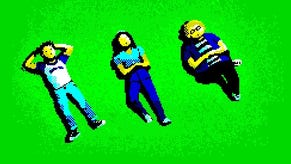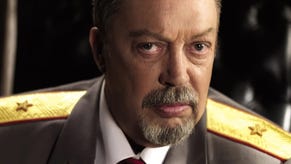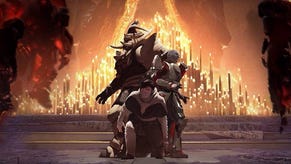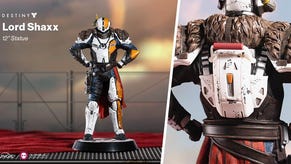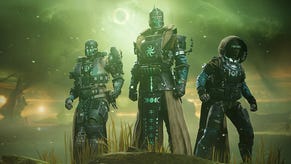Destiny: character classes, races and... #TeamTigerMan
We talk to Bungie about its new shooter.
During its hotly anticipated session at the Game Developers Conference last week Bungie's design director Joe Staten and art director Chris Barrett discussed the Halo creator's world-building process, going over much of what it revealed during Destiny's own reveal earlier this year.
But it also dived deeper into Destiny's character creation, which allows you to pick from three races and three classes before you set out into its "mythic science fiction" solar system.
When creating a character in Destiny, three races are available: the Human, the Awoken and the Exo. The humans are as you'd expect - what's left of the human race huddled together inside the last great city on earth under the protection of the Traveller. They're described as "relatable", "tough", and "uncomplicated". Bungie used images of sports stars, such as David Beckham, and action heroes to help define what Destiny's Humans should be.

The Awoken are described as "exotic", "beautiful" and "mysterious". For inspiration Bungie looked at vampires, elves, ghosts and angels.
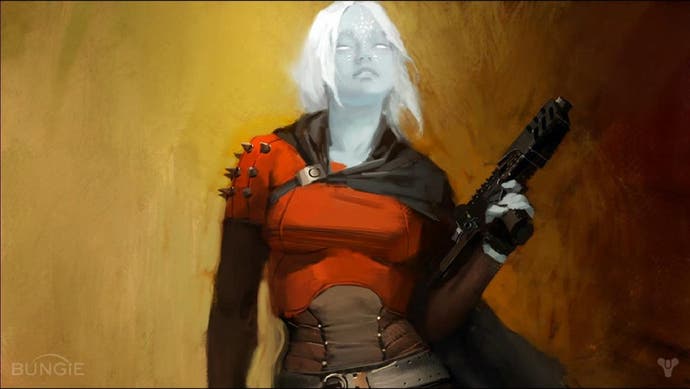
The Exo are "sinister", "powerful" and "tireless war machines". For inspiration here Bungie looked at the undead, Halo star Master Chief and the Terminator.
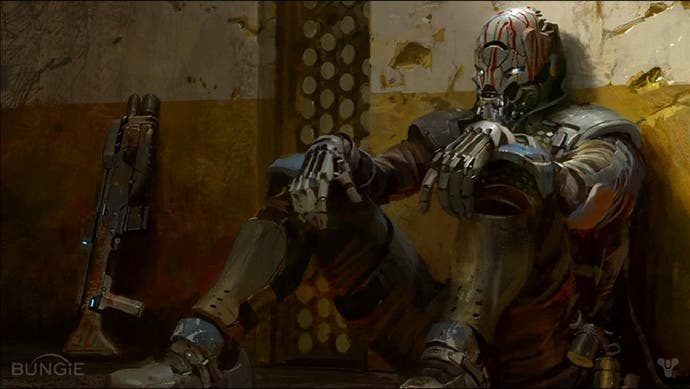
One race, though, didn't make the cut, Bungie said: the noble, bestial and wise Tiger Man. More on him later.
Then Tiger Man has served his purpose. He has become the bullet shield. That's his role. He is brave and noble and strong and wise.
Joe Staten
Destiny's character creation will sound familiar to those who have played MMORPGs in the past. After picking a race you can tweak hair, make-up, accessories and even tattoos. After settling on your look, you're then faced with deciding your character's style of fighting. There are three to choose from: the titan, the hunter and the warlock.
The titan is the "future soldier", inspired by hulking space marines of traditional science fiction. The hunter is a bounty hunter of sorts, inspired by Westerns. Hunters wear cloth and cloaks, with a "cool, collected" feel.
And, finally, the warlock, described as the "space wizard". Bungie spent much time debating the rights and wrongs of having "wizards with guns" in Destiny, before eventually deciding it was okay, and that's because, in Destiny, "guns are like swords".
After Bungie's GDC session Eurogamer sat down with Staten and Barrett to discuss Destiny's character creation, its "mythic science fiction" and more.
I've got a funny feeling fans will bug you about Tiger Man for a long time, and you may have shot yourselves in the foot by even mentioning him.
Joe Staten: Then Tiger Man has served his purpose. He has become the bullet shield. That's his role. He is brave and noble and strong and wise.
Chris Barrett: I guess Blizzard did it with the panda, right? That turned out to be a whole expansion.
Oh dear...
Joe Staten: No!
I've already seen #TeamTigerMan on the internet. So, well done!
Joe Staten: Thanks. Whoops.
You mention mythic sci-fi and idealised reality as guides for what Destiny is, and you've created some stunning concept art. But building an actual video game that lives up to the promise of that concept art must be a particularly difficult challenge.
Chris Barrett: Switching gears for the whole team and coming up with this new world was certainly tough. We had a lot of people who were used to making Halo games for a long time, so trying to communicate that new vision and get them on board, we had to do a lot of concept art to show people what we were thinking about and what mixtures of sci-fi versus fantasy worked and what we were going for.
The other thing though, the whole is greater than the sum of its parts. When you start making characters who fit into that world, or stories players are playing, or bring some of it into the gameplay, it all starts to form that feel.
Joe Staten: I remember playing a build maybe a month ago, and for some reason the build just wasn't rendering cloth. I play as a hunter character with the big cape and cloak and hood. That part fell away, and all of a sudden there was something missing from that mythic sci-fi, because nobody had cloth on, and it looked much more like a straight up sci-fi game. It's that texture that the art is bringing to the world, and the colour palette and the screen effects. It is this combination of things that make it happen.
I'd also say - and I never thought this would happen - but it's crazy that so many of the pieces of concept art we made long ago are actually present in the game. You can look at that postcard and go into the game and as you're playing you'll say, 'Oh my god, that's The Buried City.'
The challenge is communicating the vision and the theme clearly enough to the people who need to make it, answering their questions, being open to their push back, but all having a very clear vision of what you're going for. And if you define that well and you define it right, you can achieve a lot of these things we thought early on would be really hard if not impossible to do. And that's been really great to see.
It's crazy that so many of the pieces of concept art we made long ago are actually present in the game. You can look at that postcard and go into the game and as you're playing you'll say, 'Oh my god, that's The Buried City.
Joe Staten
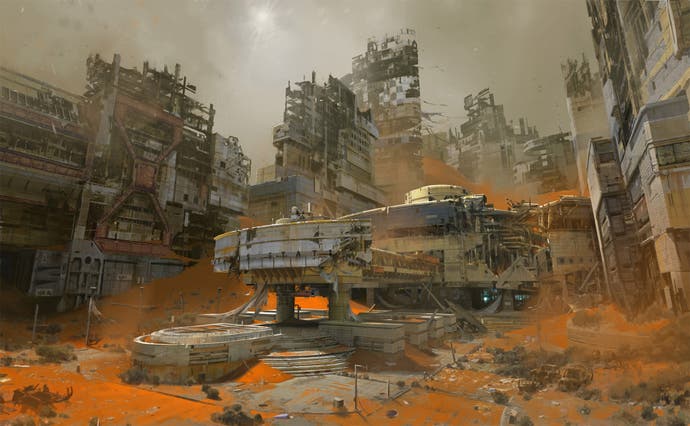
You talk a lot about players creating their own legend and their own stories in Destiny, but from a writing perspective, you also want to create a story. It must present an interesting design challenge to combine a story Bungie wants to tell with players who are creating their own stories - at the same time.
Joe Staten: Without getting into too much detail, if you think of Halo, you had two sort of experiences in general. I'm going to play the story, or I'm going to play competitive multiplayer. In the story I'm playing the story. And in competitive multiplayer I'm just fighting against people, and there's not really a story there except that awesome story of the moment to moment combat experience I'm having and the post-game, 'Oh, wasn't that awesome when you drove the Warthog that way?!' That story was really important to PvP. But there was this cinematic story that lived in a sort of silo over here.
The simple answer is, we still believe in a great narrative cinematic story. We want your character, whatever character you are, a female robot warlock or a male human titan, whoever you are, you're going to be the star of that cinematic story.
But there are many many other activities that cross the divide between story and multiplayer in this world of Destiny, and your character is going to go through all of them. So, whatever character you are in story is the same character you are in all these other activities, including competitive multiplayer.
And so, our hope is that it will feel like a consistent experience. Your legend will take you through all these different activities. Some are more narrative driven. Some aren't. Some are just more emergent. But you're a consistent character across all of those. That's the key. That's where that consistent experience comes from.
We still believe in a great narrative cinematic story. We want your character, whatever character you are, a female robot warlock or a male human titan, whoever you are, you're going to be the star of that cinematic story.
Joe Staten
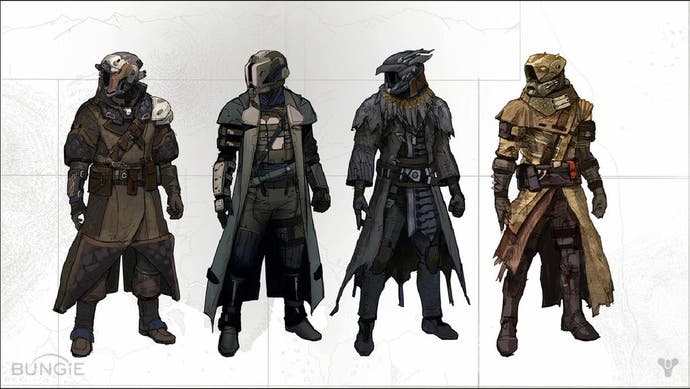
In your GDC session you talked about character creation. The impression I get is you want it to be an immediate experience, almost like you pick based on a gut reaction to the options. What is the overriding philosophy behind what you're trying to do there?
Chris Barrett: When we were talking about how that process would work and the choices the players would have, we knew if we gave somebody a choice and then betrayed that choice later down the road, that would be bad. We wanted players to just go on gut. What do they like the look of? What sounds cool to them? And not betray that in any way. We don't want to make something where a character plays very differently, or isn't what they thought what they were getting. That tied in to that process. We want to give people whatever they want to play in that world and not have any negative side effects.
Joe Staten: Making it up front and quick and largely emotional, and nothing that's going to, later down the line, make you feel like you made the wrong choice. You're going to make this gut emotional choice: 'I'm going to look at that robot and I'm going to look at that more exotic space elf and I'm going to look at that human and I like... robot.' It's like, bam. I'm going to be a robot. And there's nothing about being a robot that's going to play any different from the other two.
We want to make it immediate and quick and gut, for sure when it comes to race, and then make sure we don't screw you down the line.
Chris Barrett: We didn't want to give a plus eight bonus or whatever it is, that people are going to be like, 'Oh, I made the wrong choice! I've got to start over.' That always sucks.
With Halo you were locked in to working on a single main character with Master Chief. Now you're working on multiple main character types. That must have been quite the change, being able to say, actually, I can create whatever I want now.
Chris Barrett: Absolutely. Some of the early brainstorms on the enemies for example were just lining up, what are awesome things we want to do? Like, 'Oh, let's make ancient robots! We need those!' Or, 'Let's make dimensional beings!' Whatever it is we thought could fit in the world we could do because we had all those more options.
We wanted space zombies and robots and we could do that in this world, which was super cool. So it was liberating. It was a lot of fun doing all that stuff instead of trying to cram it all into one character design. It was freeing.
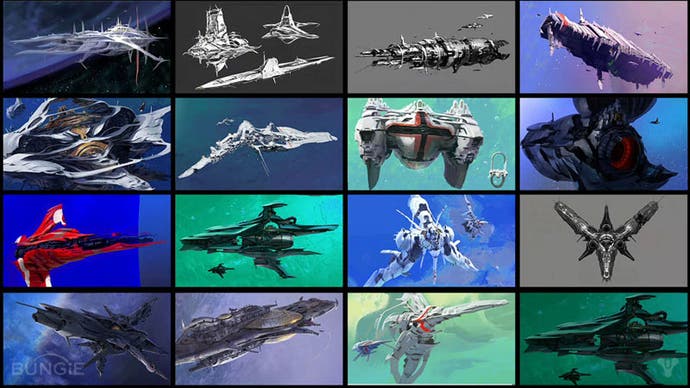
With Master Chief you had to consider just one central character's backstory. Now you have to deal with multiple stories for multiple characters.
Joe Staten: As long as you as a writer remain flexible and don't try to put too many rules on the process up front, your really fun job is to make everything possible. So if Chris comes to me with an image of the Traveller, or if he comes to me with an image of a guy with a soul ripping out of his head, or space zombies or robots, it's been a real pleasure just to assimilate all of those ideas loosely and try to create a world where it's less about the constraints and the rules and more about, what's possible?
Like, give me the big brackets. Give me fantasy and sci-fi. There's a lot that can fit in between those two big brackets. And then it's just a matter of, well, where do space zombies go? Do they go on the moon? Do they go on Mars? What's cool? Artistically, what looks better? What's a richer combination of palettes? So much of our fiction conversation is just about creating this pleasing world, this inviting world, this world that looks good, that's beautiful, that draws you deeper.
It's less about writing about a bunch of backstory. We certainly do some of that, but it's more about sort of colour blocking. Like, big, thematic blocking we do. Let's talk about Mars. Okay, let's look at it thematically. Who belongs in Mars? Is it big Kabal? Is it space zombies? Really, much of the work has been just moving around these different elements until we get a pleasing whole big picture. Then we have to tighten the screws.
If I were writing a Halo game, what I would do is, typically, I would sit down and write a linear script that looked a lot like a film. I would just bang it out. Here's what the story is going to be. Here's what the characters are. We'd make a story. We'd talk about backstory. In this world, we spent a lot more time just doing what I think people would do in a television show, which is, we've got this plot card, and that is, like, space zombies invade the moon, or whatever it is, and that's an awesome idea. Let's just put that there. And then let's come up with other ones. And then let's start moving them around and stay flexible and then f***ing play the game so we know it's going to be fun, and then, let's finally tighten the screws and shoot it.
That's been a really rewarding, different process than we've gone through before.
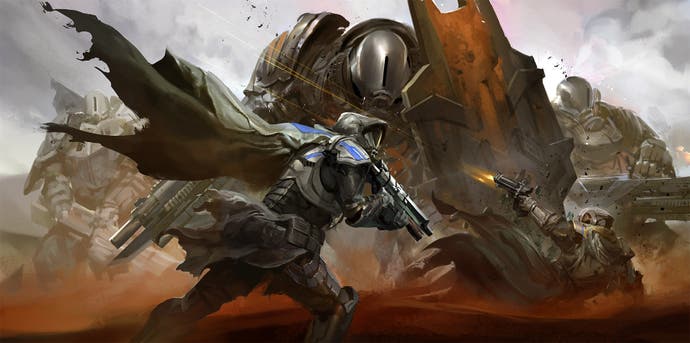
Some of the art shows Earth reclaimed by nature or in some abandoned sci-fi style. Will we be able to visit these places on Earth in the game as well as go out into the solar system?
Chris Barrett: We're doing both. It's exciting to explore what was humanity. What happened to humanity? And be able to explore those spaces on Earth. Those are real places we want to explore.
And then also what's also cool is seeing how humanity spread into the stars and what happened on those other planets. Both are super exciting in the same way.
Joe Staten: We sometimes toss around loosely terms like galaxies and universes and solar systems, but we're really excited about telling, at least during the beginning of the story, the story of a human civilisation in our solar system. So we're talking about the moon and Mars and Venus and the moons of Saturn. You can Google Enceladus or the Moon. But we want to take that familiar understanding of what these places are and tweak them into this world of strangeness and mystery. And that's true for Earth as well. You can type in Chicago but you're not going to get a picture of flooded streets.




